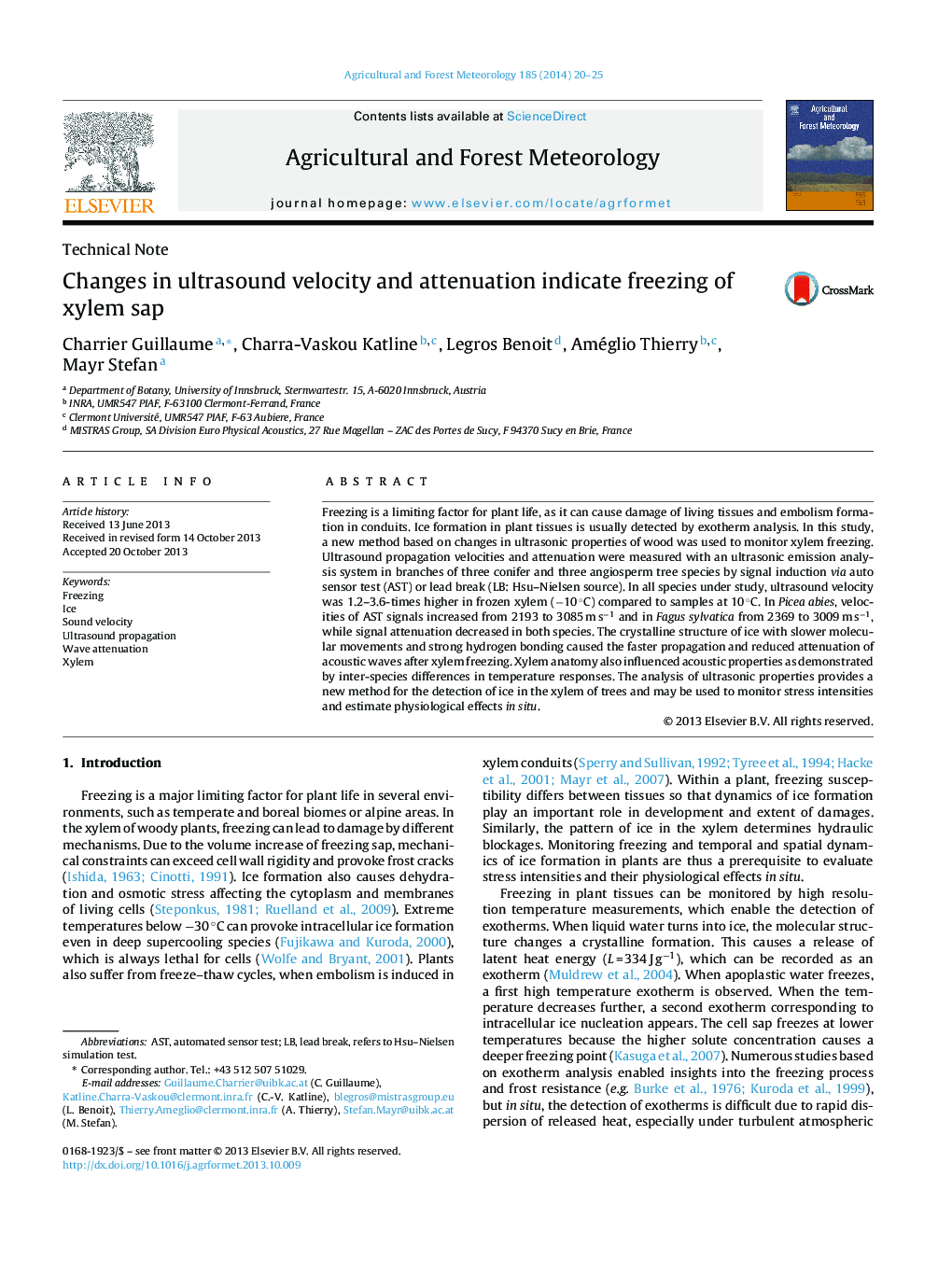| کد مقاله | کد نشریه | سال انتشار | مقاله انگلیسی | نسخه تمام متن |
|---|---|---|---|---|
| 81770 | 158345 | 2014 | 6 صفحه PDF | دانلود رایگان |
• Freezing of xylem can be detected by a 1.2–3.6-times increase in ultrasound propagation velocity and decreased wave attenuation.
• Attenuation of ultrasounds is reduced depending on water to ice transition and temperature.
• Ultrasounds propagation in wood allows ice detection in tree xylem.
Freezing is a limiting factor for plant life, as it can cause damage of living tissues and embolism formation in conduits. Ice formation in plant tissues is usually detected by exotherm analysis. In this study, a new method based on changes in ultrasonic properties of wood was used to monitor xylem freezing. Ultrasound propagation velocities and attenuation were measured with an ultrasonic emission analysis system in branches of three conifer and three angiosperm tree species by signal induction via auto sensor test (AST) or lead break (LB: Hsu–Nielsen source). In all species under study, ultrasound velocity was 1.2–3.6-times higher in frozen xylem (−10 °C) compared to samples at 10 °C. In Picea abies, velocities of AST signals increased from 2193 to 3085 m s−1 and in Fagus sylvatica from 2369 to 3009 m s−1, while signal attenuation decreased in both species. The crystalline structure of ice with slower molecular movements and strong hydrogen bonding caused the faster propagation and reduced attenuation of acoustic waves after xylem freezing. Xylem anatomy also influenced acoustic properties as demonstrated by inter-species differences in temperature responses. The analysis of ultrasonic properties provides a new method for the detection of ice in the xylem of trees and may be used to monitor stress intensities and estimate physiological effects in situ.
Journal: Agricultural and Forest Meteorology - Volume 185, 15 February 2014, Pages 20–25
